Entrepreneurs from all walks of life are all asking the same question, “How can we, the business (or as individuals), be more efficient at what we do?” With modern technology there is a wide variety of tools that has made previously tedious and daunting tasks a breeze! So many tools, in fact, that it’s easy to get overwhelmed figuring out which ones best suit your business. Unfortunately, not all tools are made equal so it’s important to evaluate the features of each. I have outlined a few of my personal favorites that have worked incredibly well for me and my business and I hope they do the same for you. The tools mentioned below range from free to costing a fair sum of money. As previously stated, not all tools are made equal and in the past, I have found myself getting “stuck” in that place of free, but sometimes it isn’t always the best.
1.Asana
 I have tried many task/project manager tools and Asana is hands down THE BEST. They have a free basic plan that works well for small teams, but depending on the features you are after and the tasks you encounter daily, one of the upgraded plan options may work better for your team.
I have tried many task/project manager tools and Asana is hands down THE BEST. They have a free basic plan that works well for small teams, but depending on the features you are after and the tasks you encounter daily, one of the upgraded plan options may work better for your team.
Asana is fast, intuitive, and easy to manipulate. Asana’s arrangement features, and user interface make it easy to navigate, prioritize, and organize. My favorite part is that it takes the form of a check list and you can mark tasks completed as you go. You can also schedule reoccurring tasks on any given interval whether that be every x amount of days, weekly, monthly, bi-monthly, etc.
Asana also makes it easy to communicate with your team on projects since there are notes and comment sections for each project.
2.WorkflowMax
How does having 626 hours of your time back sound? AMAZING? That’s what I thought. On average, that’s how much time WorkflowMax saves its clients — along with $22,000 per year. This tool is perfect for businesses and freelancers whose services are very much dependent on time. Without much effort at all, businesses can track time spent on various tasks and remain accountable for their work.
WorkflowMax allows users to create professional, instant quotes for potential clients, then invoice them later with equally professional-looking forms. Users can even build timelines for special projects and view productivity analytics within the program. You can even integrate add-ons such as Xero to completely customize it to your needs.
3.Slack
 Ever come up with an idea, but everyone’s’ calendars are already packed for the day? Plus, haven’t we established how much we all hate meetings? Slack is an amazing tool to help you stay in touch with your team, it’s a simple app without a lot of pizazz, but packs a punch in the productivity timeline.
Ever come up with an idea, but everyone’s’ calendars are already packed for the day? Plus, haven’t we established how much we all hate meetings? Slack is an amazing tool to help you stay in touch with your team, it’s a simple app without a lot of pizazz, but packs a punch in the productivity timeline.
Another one of my favorite tools—Slack is the most popular and best tools for communicating with your team by giving your team members a workspace with organized and accessible conversations. Slack also includes a searchable archive of teams conversations so everyone has access to the answers they need.
3.Active Campaign
My new favorite tool is ActiveCampaign. It is a hidden gem in the marketing automation world! They’re one of the most affordable providers for small businesses and their software is exceptionally well-designed. What’s surprising is the fact very few people have heard of them! Unlike other marketing automation tools, I have used, I have yet to have an idea that ActiveCampaign won’t allow me to build. It may not be free, but the pricing is incredibly generous for the quality product you receive. Active Campaign for email marketing with its robust marketing automation and multi-dimensional segmentation, makes it super simple for building funnels—love, love, love it!
4.Leadpages
 Running a special? Offering a new product or service? Whatever it may be, you can easily create targeted lead pages and track their results without redesigning your website. With over 160 plus free mobile-responsive templates, you can easily create multiple versions of pages to optimize your landing page success rate. Another great thing about Leadpages is that you can easily integrate it with over 40 tools and platforms!
Running a special? Offering a new product or service? Whatever it may be, you can easily create targeted lead pages and track their results without redesigning your website. With over 160 plus free mobile-responsive templates, you can easily create multiple versions of pages to optimize your landing page success rate. Another great thing about Leadpages is that you can easily integrate it with over 40 tools and platforms!
5.Google Docs
If Google Docs isn’t already part of your everyday workflow then it definitely needs to be! It’s free, easy, allows for easy collaborations and file sharing and it has it’s own version of Word, Excel and Powerpoint all with cloud storage.
6.Groove
Groove is a great option to quickly and easily set up all the customer service options you’d want in one place. It focuses on helping small business grow and makes it easy for teams to work out of internally. If more extensive programs like Zendesk are too much for your business, this is a great option to keep your customer service simple and effective.
If you haven’t tried these already, I hope you give some of these a go and see what they can do for your business! Feel free to let me know what your favorite tools are!



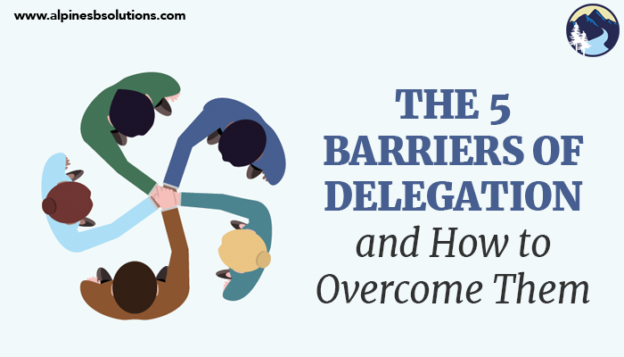
 We all know that time is money, and we are always looking for ways to save time and be more efficient in what we do. Those voices in your head are telling you that you don’t have the time to adequately explain or teach the skills for the task at hand to your team member. The good news is, delegating task actually
We all know that time is money, and we are always looking for ways to save time and be more efficient in what we do. Those voices in your head are telling you that you don’t have the time to adequately explain or teach the skills for the task at hand to your team member. The good news is, delegating task actually  Another barrier business owners may come across is the fear that you are going to train yourself out of a job. Or maybe there’s a reoccurring task that you enjoy but you offloaded it to a team member. This is a great problem to have! Now that you have less on your plate you can move to a higher position, take on more challenging tasks, or focus on those business development plans you never had the time for. You will also be rewarded by seeing others succeed because of your coaching.
Another barrier business owners may come across is the fear that you are going to train yourself out of a job. Or maybe there’s a reoccurring task that you enjoy but you offloaded it to a team member. This is a great problem to have! Now that you have less on your plate you can move to a higher position, take on more challenging tasks, or focus on those business development plans you never had the time for. You will also be rewarded by seeing others succeed because of your coaching. Asking for help sucks, and you might feel like it’s a sign of weakness, when really it is a sign of strength and trust. We are only human, and we can’t do everything by ourselves. Often it is fear that fuels this anxiety: Fear of over-stepping. Fear of appearing too needy. Fear of imposing. Fear of revealing our struggle and having people realize we don’t have it all together after all. When we support other people to be more
Asking for help sucks, and you might feel like it’s a sign of weakness, when really it is a sign of strength and trust. We are only human, and we can’t do everything by ourselves. Often it is fear that fuels this anxiety: Fear of over-stepping. Fear of appearing too needy. Fear of imposing. Fear of revealing our struggle and having people realize we don’t have it all together after all. When we support other people to be more 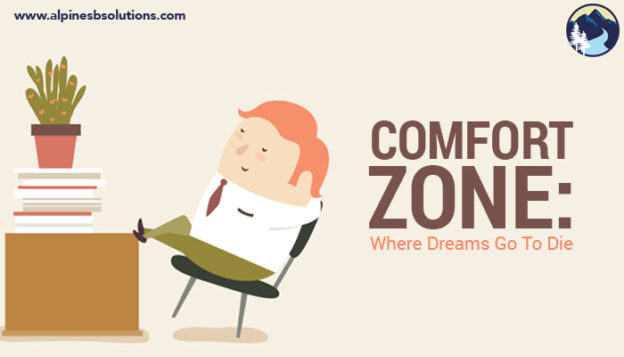
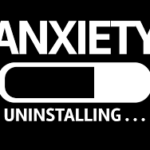 The idea of the comfort zone dates back to 1908, with a classic psychology experiment by Robert M. Yerkes and John D. Dodson. They found that a state of relative comfort created a steady level of performance.
The idea of the comfort zone dates back to 1908, with a classic psychology experiment by Robert M. Yerkes and John D. Dodson. They found that a state of relative comfort created a steady level of performance. So we learned that optimal anxiety is that place where your mental productivity and performance reach their peak. What’s the incentive to pushing ourselves to that next level? Here is what you get once you’re able to step outside of your comfort zone:
So we learned that optimal anxiety is that place where your mental productivity and performance reach their peak. What’s the incentive to pushing ourselves to that next level? Here is what you get once you’re able to step outside of your comfort zone: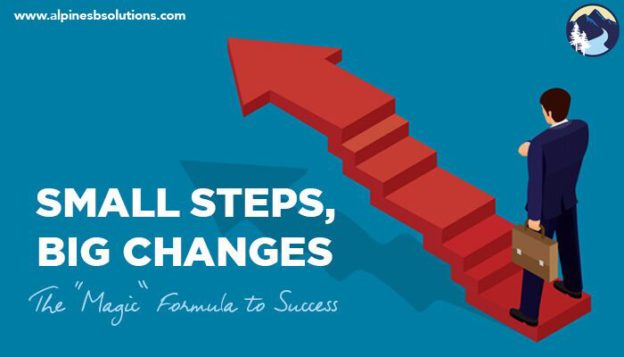
 Decide what you want. Consider what you want to achieve. Set S.M.A.R.T goals that motivate you and write them down to make them feel tangible. By setting Specific, Measurable, Attainable, Relevant and Time-bound goals you can measure and take pride in the achievement of those goals. You will be able to see the forward progress in what might otherwise feel like a long pointless grind.
Decide what you want. Consider what you want to achieve. Set S.M.A.R.T goals that motivate you and write them down to make them feel tangible. By setting Specific, Measurable, Attainable, Relevant and Time-bound goals you can measure and take pride in the achievement of those goals. You will be able to see the forward progress in what might otherwise feel like a long pointless grind. Doing things carelessly is the mother of everything that can go wrong. When you want your project to succeed, you invest yourself in it fully. “The difference between ‘involvement’ and ‘commitment’ is like an eggs-and-ham breakfast: the chicken was ‘involved’ – the pig was ‘
Doing things carelessly is the mother of everything that can go wrong. When you want your project to succeed, you invest yourself in it fully. “The difference between ‘involvement’ and ‘commitment’ is like an eggs-and-ham breakfast: the chicken was ‘involved’ – the pig was ‘ Be determined and most important, consistent. Fully dedicate yourself to your goal. Consistency is about building small empowering habits and rituals that you partake in every single day that keep you focused on your highest priorities and goals. It essentially comes down to your ability to hold yourself accountable for the daily choices you make, with no excuses and no complaints. You and you alone are accountable for what you do and what you fail to do. All responsibility lies solely in your hands.
Be determined and most important, consistent. Fully dedicate yourself to your goal. Consistency is about building small empowering habits and rituals that you partake in every single day that keep you focused on your highest priorities and goals. It essentially comes down to your ability to hold yourself accountable for the daily choices you make, with no excuses and no complaints. You and you alone are accountable for what you do and what you fail to do. All responsibility lies solely in your hands.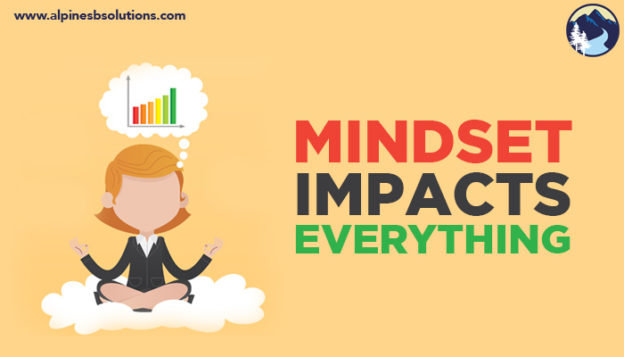
 Growth Mindset
Growth Mindset Fixed Mindset
Fixed Mindset Whether you’re aware of it or not, you keep a running account of what’s happening, what it means, and what you should so. Our minds are constantly monitoring and interpreting. That’s just how we stay on track. Mindset frames the running account of what is taking place. It guides the whole interpretation process.
Whether you’re aware of it or not, you keep a running account of what’s happening, what it means, and what you should so. Our minds are constantly monitoring and interpreting. That’s just how we stay on track. Mindset frames the running account of what is taking place. It guides the whole interpretation process. Changing from a fixed mindset to a growth mindset is not like surgery; you can’t remove a fixed mindset and replace it with a growth mindset. You must work on nurturing a positive, growth mindset. These are tips from
Changing from a fixed mindset to a growth mindset is not like surgery; you can’t remove a fixed mindset and replace it with a growth mindset. You must work on nurturing a positive, growth mindset. These are tips from
 Burnout feels awful. Awful enough to be a catalyst for promoting positive change. It can force you to change poor work habits (like working through lunch). Or cause you to reassess your priorities (like too much office time and not enough family time). Or even make you re-evaluate whether your current job or projects are what you should be doing.
Burnout feels awful. Awful enough to be a catalyst for promoting positive change. It can force you to change poor work habits (like working through lunch). Or cause you to reassess your priorities (like too much office time and not enough family time). Or even make you re-evaluate whether your current job or projects are what you should be doing. Aromatherapy involves inhaling essential oils (liquids from natural extracts like flowers and fruits). The scent interacts with our body, helping to cause benefits like improving your focus and stimulating your brain. One research study found that lavender and rosemary reduces cortisol levels (the hormone released in fight or flight mode that can be a big mental drain). Smelling certain oils can help give you the jolt of energy you need in a healthier way than turning to excessive caffeine.
Aromatherapy involves inhaling essential oils (liquids from natural extracts like flowers and fruits). The scent interacts with our body, helping to cause benefits like improving your focus and stimulating your brain. One research study found that lavender and rosemary reduces cortisol levels (the hormone released in fight or flight mode that can be a big mental drain). Smelling certain oils can help give you the jolt of energy you need in a healthier way than turning to excessive caffeine. Sometimes just writing down everything you need can help you
Sometimes just writing down everything you need can help you 
 Imposter syndrome is a term often thrown around and splashed in click baiting headlines, leaving people confused as to what it actually is (and whether they’re affected by it).
Imposter syndrome is a term often thrown around and splashed in click baiting headlines, leaving people confused as to what it actually is (and whether they’re affected by it). Imposter syndrome is the little troll on our shoulder feeding us lies about our potential. It keeps us from being the best
Imposter syndrome is the little troll on our shoulder feeding us lies about our potential. It keeps us from being the best  It’s okay to celebrate and take pride in your success. In fact, it’s important for your confidence’s sake to view your success accurately. (That means recognizing the role your ability and
It’s okay to celebrate and take pride in your success. In fact, it’s important for your confidence’s sake to view your success accurately. (That means recognizing the role your ability and  a list of more achievements to feel more confident. But, the problem with imposter syndrome isn’t a lack of success (since it happens with people who are very successful). It’s not being able to internalize accurately those successes. Imposter syndrome won’t go away with more success.
a list of more achievements to feel more confident. But, the problem with imposter syndrome isn’t a lack of success (since it happens with people who are very successful). It’s not being able to internalize accurately those successes. Imposter syndrome won’t go away with more success.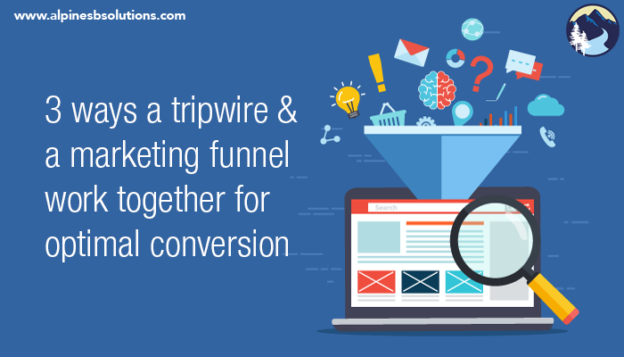
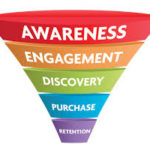 Marketers use tools to nurture leads along each stage of the funnel. Visitors to your site can give their email in exchange for a free downloadable guide (gaining awareness). A follow-up email gives them a curated list of relevant blog articles on the site (gaining interest). A follow-up email to that gives them a case study showing the benefits of your products/services (gaining desire). A follow-up email to that gives them a coupon to buy your products/services (taking action).
Marketers use tools to nurture leads along each stage of the funnel. Visitors to your site can give their email in exchange for a free downloadable guide (gaining awareness). A follow-up email gives them a curated list of relevant blog articles on the site (gaining interest). A follow-up email to that gives them a case study showing the benefits of your products/services (gaining desire). A follow-up email to that gives them a coupon to buy your products/services (taking action). they need to know it exists. Insert the marketing funnel! You can use the marketing funnel to direct people to the end action: acting on the trip wire. Social media, blog posts, emails can all give that push towards buying the trip wire. Not everyone will make it from gaining awareness to making that purchase. But strategic marketing can help get more people to that purchasing point.
they need to know it exists. Insert the marketing funnel! You can use the marketing funnel to direct people to the end action: acting on the trip wire. Social media, blog posts, emails can all give that push towards buying the trip wire. Not everyone will make it from gaining awareness to making that purchase. But strategic marketing can help get more people to that purchasing point.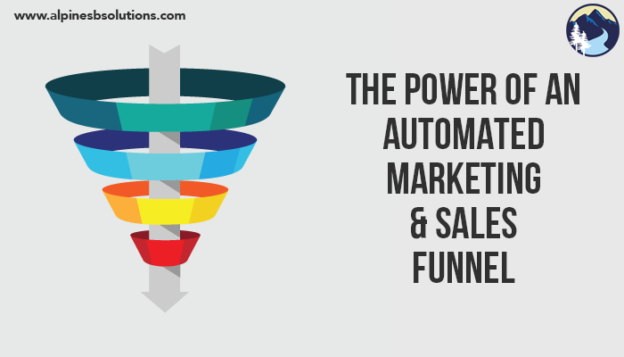
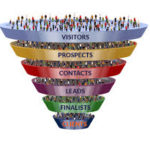 You’ve probably heard this phrase before. Many, many, many times I imagine. Let’s quickly debrief anyway.
You’ve probably heard this phrase before. Many, many, many times I imagine. Let’s quickly debrief anyway. Automation, when done well, can be a marketer’s best friend. First of all, it saves you an immense amount of time. Instead of you sitting down to individually send an email to people at each stage of the funnel, these emails can be sent automatically.
Automation, when done well, can be a marketer’s best friend. First of all, it saves you an immense amount of time. Instead of you sitting down to individually send an email to people at each stage of the funnel, these emails can be sent automatically. attention (since that “unsubscribe button” is all too easy to press). Send a follow-up email to those who subscribed giving them more helpful information. Nothing sales-y here either! The goal is to intrigue your audience about your brand by showing you know your stuff. Send an email with a round-up of useful articles on the given topic. Share valuable resources. Prove that your emails (and your company) offer value.
attention (since that “unsubscribe button” is all too easy to press). Send a follow-up email to those who subscribed giving them more helpful information. Nothing sales-y here either! The goal is to intrigue your audience about your brand by showing you know your stuff. Send an email with a round-up of useful articles on the given topic. Share valuable resources. Prove that your emails (and your company) offer value.
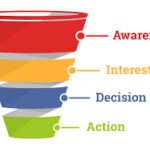 The “
The “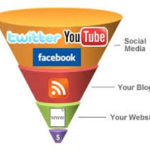 When you create a social media sales funnel, you supercharge your
When you create a social media sales funnel, you supercharge your  Once you know which channels to be on, you can work on generating that awareness. Facebook ads, for example, can help potential customers discover your page. When applicable, tag other organizations in your posts to help your posts show up on their followers’ pages. Cross promote your social channels through strategies like including the social links in your email signatures or newsletters.
Once you know which channels to be on, you can work on generating that awareness. Facebook ads, for example, can help potential customers discover your page. When applicable, tag other organizations in your posts to help your posts show up on their followers’ pages. Cross promote your social channels through strategies like including the social links in your email signatures or newsletters.